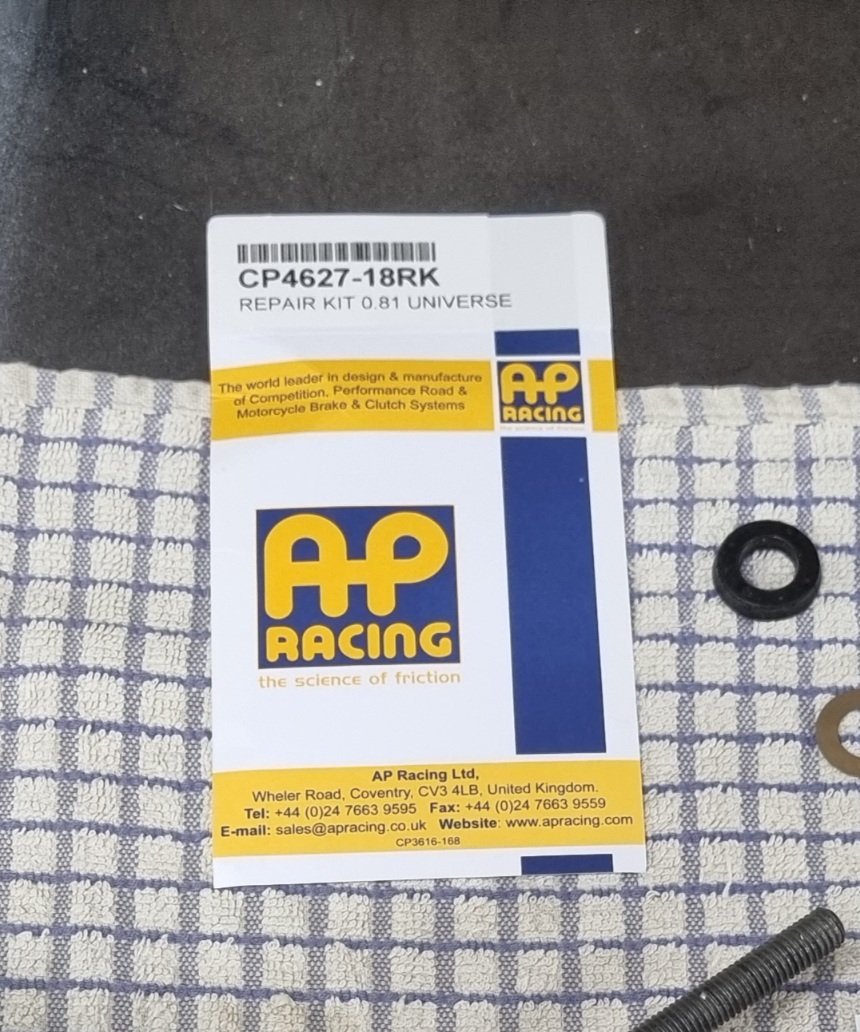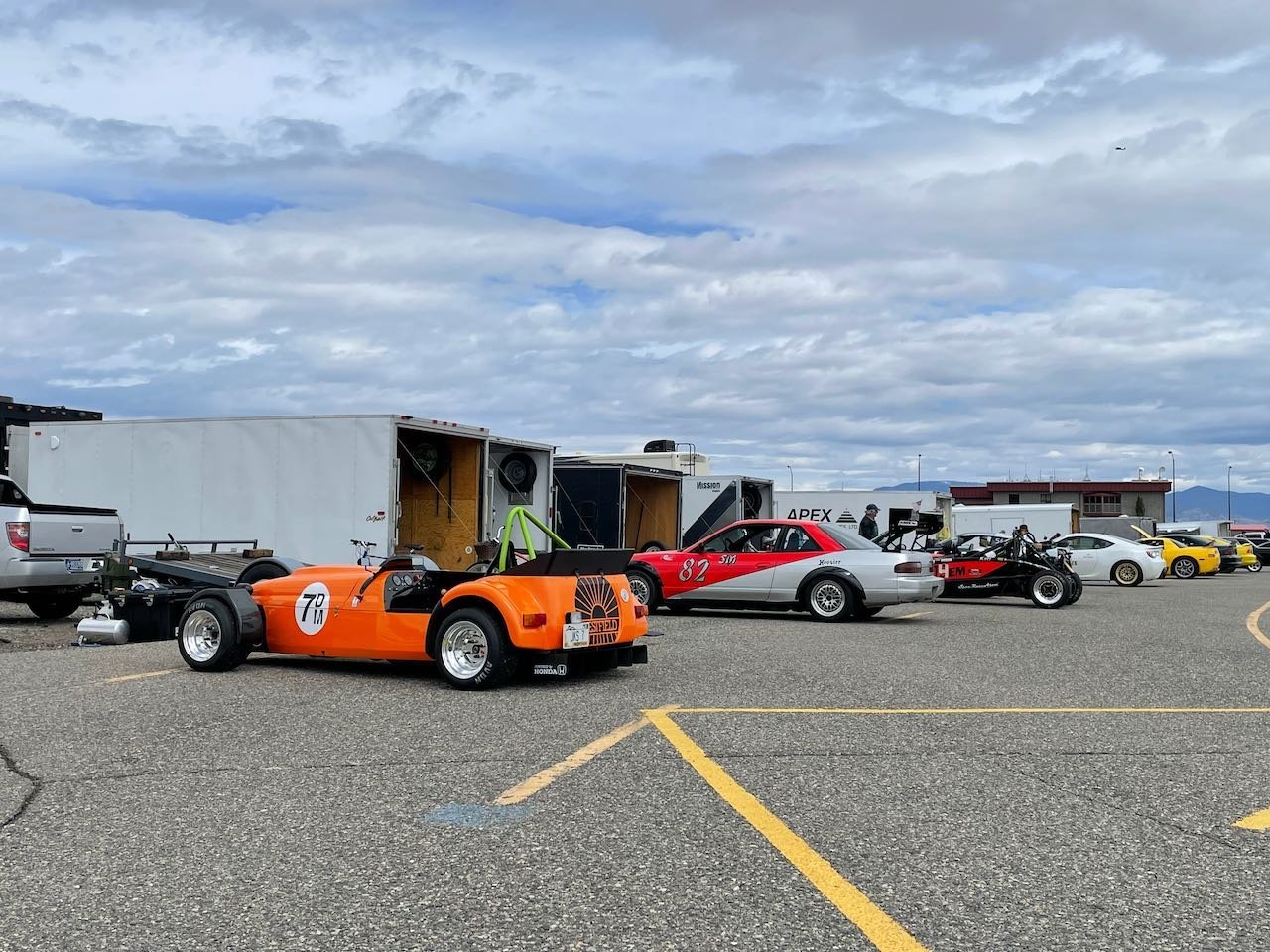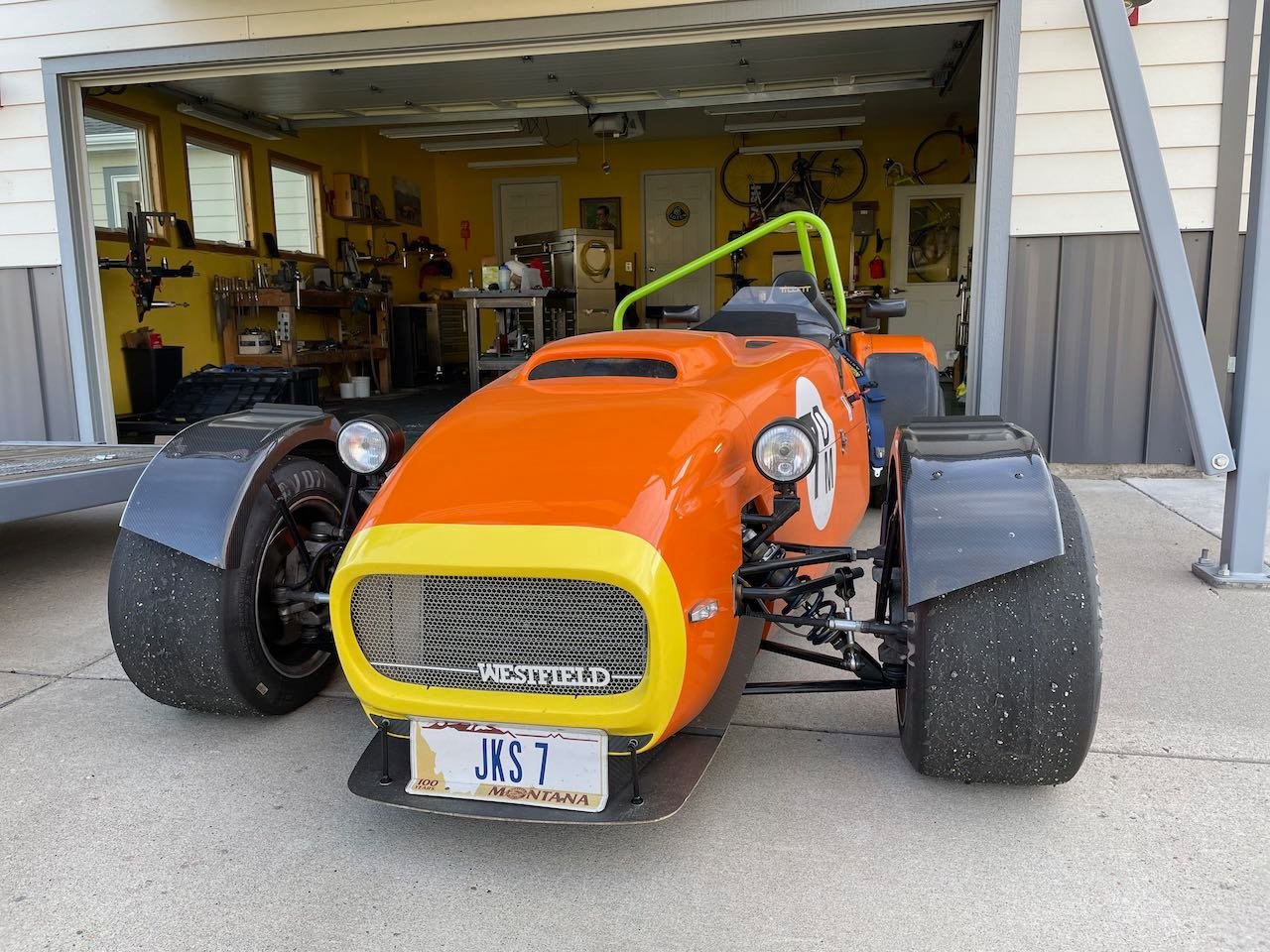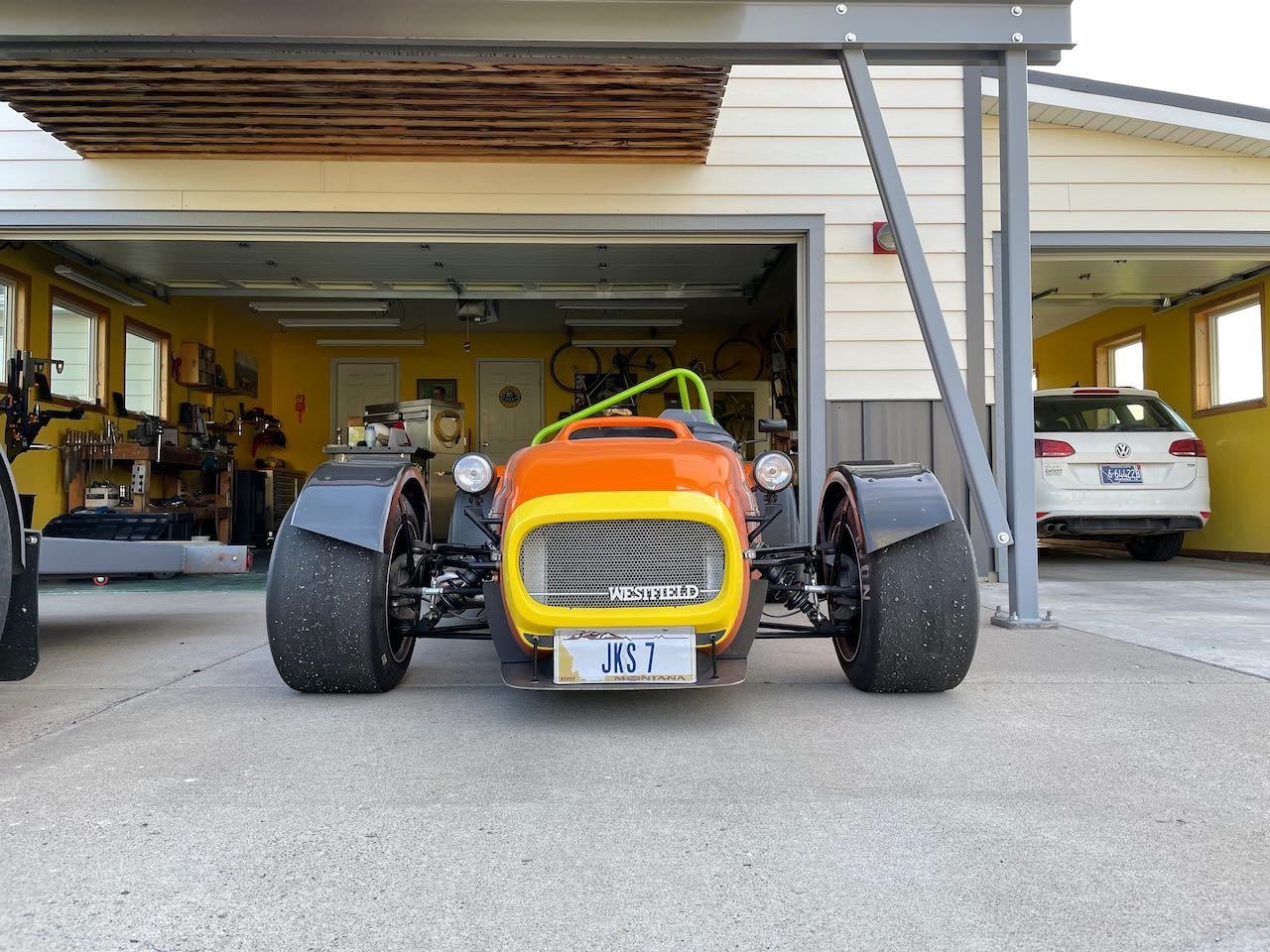Leaderboard
Popular Content
Showing content with the highest reputation on 02/06/22 in all areas
-
I should be there if it’s not wet, (or damp, or chilly…. )3 points
-
2 points
-
I'll be there at 10am if it isn't wet Have to be back for 1pm so that Gemma can go out on the horse, but that still gives me some quality time for turning money into CO2, heat and glorious noise.2 points
-
Ah yes the old high flying farting butterfly problem. Is that why my 4G signal is so bad? And a great name for a band, The High Flying Butterflies. I'm copyrighting that...1 point
-
Yes! Modem mode allows for the public IP address to be "seen" (for want of a better phrase) by the ASUS router. Essentially it makes the ASUS router the gateway for your internet connection by turning the hub in to a network bridge. I suspect (again, based on nothing more than my networking nous) that would not affect telephony services when they swap to being IP as the providers who allow this type of configuration (modem mode) on their gear should(!) know to take account of it. Whilst telephony services will share a single internet connection there are several processes that will logically separate the phone traffic from normal internet traffic. This is done already where hosted VoIP is used because telephone traffic requires prioritisation over internet traffic. Prioritisation is required because VoIP traffic is sensitive to packet loss and latency (time it takes to arrive at the destination) so it cannot be delayed in transit. This prioritisation is called QoS (Quality of Service) and strictly speaking QoS doesn't work on the internet. But the logical identification and separation of telephone traffic will allow QoS to be applied specifically to telephone traffic so that the phones work... I could actually go into the details of this but I fear we lost El Tel back on page one when his request for a simple answer got lost in all my waffle. Sorry Terry...1 point
-
1 point
-
If you can't see the cable from the BT master socket then it's probably been chased in to a wall or goes straight under the floor and the external ductwork may well be hidden. Any chance of a picture? And where is the master socket? I don't have much experience with phone lines that arrive on a pole. In fact I think I have just one customer with above ground phone lines and in his case the nearest pole also serves as a DP, or Distribution Point, so there is other hardware located on or adjacent to the pole. Based on my experience with similar installs I suspect the fibre will be pulled (well, blown actually, but I digress) along the same ductwork to pop out adjacent to the current master socket. Is there a mains plug near the current BT master socket? Bearing in mind that I think you are many many months, if not years away from having to worry about this... There was also a plan to provide internet along the national grid lines back in the day in a way similar to how "homeplugs" work. That never went anywhere either...1 point
-
The Caterham ports are slightly deeper too, so you may need to double check the brake line fittings do up properly.1 point
-
Here's the BT full fibre installation info. ONT was the acronym I couldn't remember which is what the "master socket" is for full fibre... https://www.bt.com/help/broadband/full-fibre/how-is-full-fibre-installed Fibre comes in to the ONT, CAT cable comes out to connect to the Hub/router. And as I suspected, the ONT needs power. The upshot is much faster internet, no more RJ11 sockets on the router and no more DSL filters on the phone line to split the phone signal from the internet signal.1 point
-
I said I suspect the connection will change once BT install the fibre to the premises. Either the fibre will be terminated to a "master socket" with an RJ45 in place of the familiar BT socket we now have to connect the internal equipment, or new "full fibre" routers/hubs will connect to the "master socket" with a fibre patch cable. My money is on copper between the new "full fibre" routers and the "master socket" 'cos copper cables are far more resilient and robust than fibre. And remember this will be a second new router. The ones coming "now" are going to connect to the current phone lines which will be utilised until an actual fibre is pulled into your dwelling, which won't go un-noticed 'cos you'll have to be home between 8 and 6... As for what you would have to do Stuart, that's a question for the provider. My guess is that if one chooses to use a router other than the ISP supplied item then one must bear the cost of upgrades if the underlying infrastructure changes and one wishes to keep not using the ISP supplied hardware. I'm in the same boat for some of my smaller customers. We rarely use ISP supplied hardware so for a handful of customers we will have to come up with an alternative which might be a bit of a faff at the beginning. I will look in to this in more detail, but not yet. It's still very very early on in this process and developments around this will be happening, so I'm going to watch this space. I assume we will get letters giving us a fair bit of notice of an engineer coming to pull fibre in. That will trigger me to ask the questions I need to ask so that the current internal infrastructure can remain functional. There's bound to be some additional cost involved and there's probably not much that can be done about that. For what it's worth, the internal connection from my Virgin router to the fibre "master socket" uses co-ax, but that's becasue co-ax is what Virgin has. They bought the old Cable and Wireless / Telewest cable TV network which is all co-ax, so they are sticking with what they know. Just about all other networks will, I imagine, use CAT6 or CAT 7 for the link from router to "master socket". Oh yeah, don't be surprised if, when the fibre comes in they ask to place the new "master socket" near a mains plug 'cos yes, they will probably need to be powered. My Virgin master socket is mains powered and I know the Hyperoptic fibre master sockets are mains powered as well.1 point
-
@Dave Eastwood (Gadgetman) - Club Chairman @Greenstreak-Andy DI might have a sat nav but who says I listen to the instructions it tells me !!!!!! I’m a bloke I don’t need instructions 🤣1 point
-
Peter rushed down the stairs saying ‘emergency emergency’. What is wrong we ask. I’ve got some grey hairs. Oh, we respond. That’s probably as you had a ride in @HB46443’s car. oh yeah says Peter and retires to his room completely satisfied with this explanation.1 point
-
1 point
-
Couple of things might need clearing up that I think are worth mentioning. First, I'm sure some of you are thinking "I've had fibre broadband for ages". Yes, for about the last 14 or so years, all internet providers have offered "fibre broadband". For the vast majority of dwellings this was/is an internet connection that uses the copper phone line, but only between the phone socket in the dwelling and the local street box, those big green boxes we see on the sides of the road, often at or near road junctions. From the street box back to the exchange the connection is fibre. This is called FTTC, or Fibre To The Cabinet. It's usually fast enough for most uses, is very reliable and reaches almost all UK homes though some rural communities are still without "fast" broadband. The "full fibre" being advertised now by Mr Bacon (and that stupid "land a plane" nonsense), Sky, BT et al is the roll-out of fibre that comes all the way to our homes. The "wholesale" name for this is Gigafast. This is Fibre To The Premises, or FTTP. Currently around 20%ish of homes have this capability although I don't know how this is measured because if I go on to BT's site, it says I can't have it, but I do have fibre to my premises through Virgin. More on that shortly, but for now I suspect the percentage of homes covered relies on the Openreach statistics as Openreach are by far the biggest infrastructure owner and provider. BT will be switching off the "analogue" phone system by 2025. This has been planned for a long time. I have a feeling the old ISDN service is being switched off this year or next year so service providers are already rolling out something similar to the "Digital Voice" service for ISDN users. You may hear it described as "Hosted VoIP" and you may be aware of companies like RingCentral (there are hundreds of others) who provide this service which is a full telephone service mostly aimed at businesses, delivered via the internet. These services have been available for around a decade or more and are a very mature and reliable service. Essentially BT's new Digital Voice service is this, a hosted VoIP service. The key difference is that until every dwelling has an actual fibre terminating at or near where the current BT master socket is, the internet and telephone connection will still use the copper phone lines. BT are providing new hubs that have the familiar BT socket on the back to which we can connect our current analogue phones. The BT Hub will convert the analogue signal from the phone to IP and the call will happen entirely normally from the users perspective. When homes receive the fibre connection the phone and internet services will be switched over to that. I suspect another new hub will arrive as the connection from the hub to the wall socket will likely change from BT phone cable to CAT 6 or maybe even CAT 7 ethernet cable. Again this is nothing to worry about, it's just a cable with different looking ends to what we are used to. Now, where I have said "BT", whatever service provider is providing internet and phone lines to your home will likely be going through a similar process, IE sending a new internet router with a BT socket on the back to allow analogue phones to work as normal. I haven't checked them all (I have a life, almost...) but as a quick sample, here's Sky's page explaining what will happen for their subscribers when BT switch off the analogue lines. https://www.sky.com/help/articles/about-internet-calls I'm in a slightly odd position in that I still have a phone line with BT with the internet over it coming from Sky. I am sure this is a rare occurrence these days so that's going to be interesting, and almost certainly very annoying when the argument starts as to who should provide my VoIP hub!!! I mentioned the roll-out numbers and that I have fibre to the premises already, from Virgin Media. This is an entirely separate connection to the BT phone line that carries the phone and the Sky internet connection for the rest of the house. So yes, there are currently two internet connections at my house, I won't bore you all with why!!! I am reasonably sure the powers that be (OfCom) don't include "private" company infrastructure (like Virgin, CommunityFibre, G-Fast etc) in their calculation or the number of dwellings that have "full fibre" capability is likely to be higher. At the moment the best place to check what internet is available to your dwelling is to use one of the "switching" websites like U-Switch. I'm usually not a fan of these switching sites but they do at least look at most if not all of the market. If after checking it looks like there is a cheaper or faster option (depending on what one needs) than what one has already then either follow the U-Switch buying option or go to the company website and do some more checking. With the switch to VoIP calls there is one more VERY IMPORTANT thing to understand, and it is a CRITICAL SAFETY ISSUE. With analogue lines, they carry power from the exchange to home to power the phone(s) connected to them. However when a phone system uses VoIP/the internet if there is a power cut to the premises THE VOIP SYSTEM WILL NOT WORK. In business where this is a potential risk, an Uninterruptable Power Supply (essentially a big box of batteries) can be installed to allow for a bit of extra time (around 15 to 30 mins is common, depending on UPS size) before the system dies. So, if the current analogue phone line is used for a CRITICAL SERVICE like health monitoring or alarm monitoring for example, or even to call the emergency services, you must speak to the phone line provider to discuss what the options and contingencies are when the switch to "Digital Voice" happens. Back to my experience with Virgin fibre as mentioned earlier. For what it's worth, I had no idea Virgin had laid fibre past my house. I had a sales guy actually knock on my door! I was very surprised, and delighted as I discussed a deal and signed up straight away. There was a small charge for installation (50 quid) as they have to join the fibre in the street to a junction box they provided attached to my house, then pull the cable inside and install the internal connection hardware on the wall. But the subscription cost, speed and contract length mean that the total cost (TCO) amortised over the 2 year contract length is just 2 quid a month more than FTTC broadband. That said, there is no phone service on the fibre. I could have had one but I don't need it. If I had a phone service too then it would have been more expensive than the current analogue phone line and internet costs that are still in use in other parts of the house, but on a £ per Mb/s of speed for the internet compared to FTTC, it's as cheap as chips and in the three-ish months it's been running it's been as reliable as sunrise... Anyway, I hope some of this is useful, if somewhat dull...1 point
-
Good point and well observed Mr Chairman. We seem to be going to pubs a lot as the cafes are smaller and can't cope with all these people or have car parks big enough for all these cars. Pubs just don't do the cake thing very well so perhaps we can engineer a cake stop into our days a bit more🍰1 point
-
@AndrewBClarke @aeg Ladies, please focus, don't worry about the 40p Lincoln Tax, we need to come up with a plan, the cake meister @Andy Westwood is joining us and he will attempt to eat all the puddings😄, he must be stopped!1 point
-
Well, spring has reluctantly sprung and my autocross season has finally opened.I made a number of changes over the long Montana winter and was excited (and a bit nervous) to see how they worked when put to the test. This first event of the season was hosted in Helena, Montana at a police and fire training facility where they learn to slide firetrucks around! The place is huge and there is absolutely nothing to hit so the speeds are high for autocross. This means that there are lots of high speed violent lane-change maneuvers where the car is moving at 80 mph and one needs to change lanes and back again as quickly as possible. Honestly this can be scary stuff and it takes full commitment and trust that the car will be with you when you flick it at 80+ mph. This past winter I installed a new Siltech +35 sidetrack front suspension, changed the spring rates to suit the different spring angle, made a new front ARB to work with the Siltech parts and lastly I made a new ultralight rear spoiler to help keep the rear end from wanting to pass the front during high speed transitions. Saturday was cold (50°F) but dry in the morning and the brand new Avons needed a few runs to get properly scrubbed in so I could tell what the car was doing. After a few runs the car was telling me it wanted a stiffer front bar and that helped with turn-in while still keeping the rear end in line. I made a small shock adjustment (one click softer) on the Nitrons and my last run of the morning felt very good and my confidence was growing. After a lunch break it got just a bit warmer and grip was improved and I felt even better in the car I was able to set the fastest time of day (FTD) over a supercharged Ariel Atom and a full-race 600hp Corvette on 14” wide (!) slicks. My winning margin was .6 seconds on an 80 second run. Not a huge margin but it proved to be a winning one. Sunday was warmer (70°F) so the grip was much better and the course was faster (different courses for each day) and after adding a bit of toe out to the front to aide turn-in on the tighter parts of the course the car felt just right. It felt planted and supple and it could really work with the surface instead of against it. The turn-in was very crisp but the rear end stayed in line even at high speeds. With my old narrow track front it would turn in well but then you’d need to mind the tail - now I can stay on the gas without having to worry that the rear end will come around. Simply brilliant. I set FTD again this time with a 2 second margin on a 77 second run. The new widetrack front is no doubt mostly responsible for the change. The rear spoiler might aide a bit at high speed but the car felt awesome even during 60 mph full throttle, long radius sweeper turns. I’m sure I have more room as a driver to take advantage of the new set up and that will hopefully come as the season progresses and I gain more confidence. I wish I had photos of the car in action but I had no one to take any so some static shots will have to do. The first is of the car loaded on the trailer to make the trip to Helena (100 miles), the next is the pits for the event with my car and a 500+ HP Nissan and the Supercharged Atom, and the last two are of my car safely back home with lots of pick up from pulling off the course and over dirty pavement with hot tires. Thanks to Siltech for helping make me quicker. Dennis went above and beyond the call of duty to answer the countless emails to get everything sorted out for my car. The next race is next weekend. Hoping for sun and warm pavement! Thanks for reading. Dave1 point
-
That's interesting. The Sports Car Club of America (SCCA) requires that the car passes a basic safety inspection (seat belts work, brake pedal doesn't go to the floor, battery tied down....etc) and the driver needs to have closed toe shoes and a proper helmet that is up to date. That's about it. I've been competing 15-20 days a year for the past 20 years and have never seen anyone get hurt. I did see a car roll over once....a poor course design caused the driver to loose control and slide sideways off the pavement and into the dirt and the tires rolled off the rims, the wheels dug in, and over it went. The driver was lucky. The car (Toyota MR2) rolled over and back onto it's wheels and the driver got out and walked away without a scratch. The "anyone can drive nearly anything" approach of the SCCA seems to work out well and it exposes so many drivers to the finer aspects of car control. There's even a young person's program to teach drivers how to handle a car before they actually drive on the open road. Cool stuff. dave1 point
-
Sadly I need to be back early on Sunday so it'll be a quick run down to Curborough for me I think0 points

















